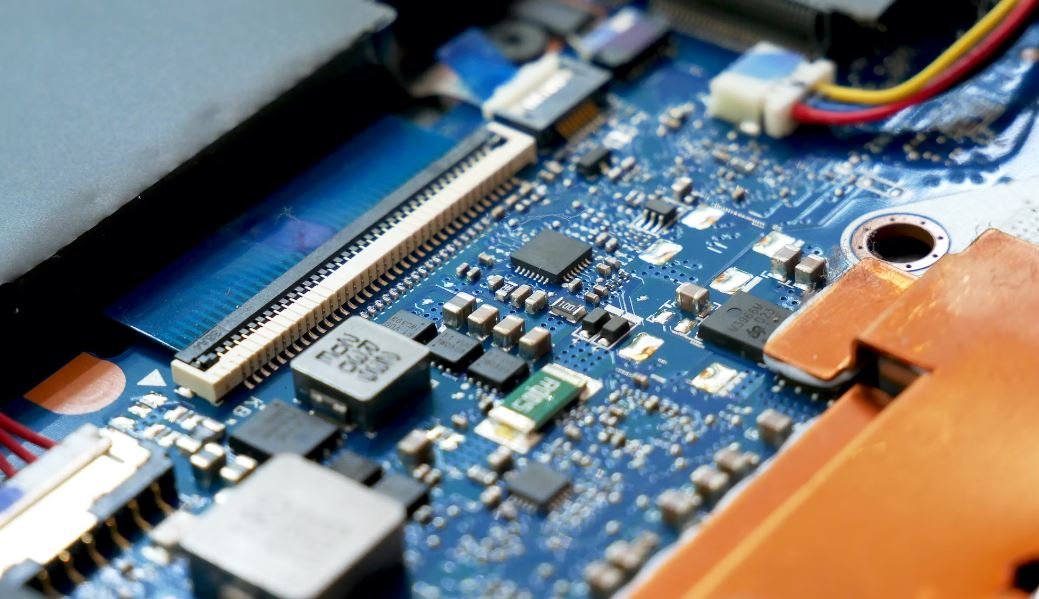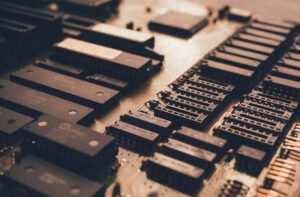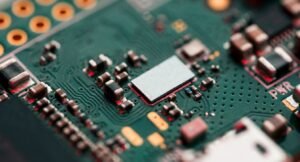AI Tools Used in Agriculture
Artificial Intelligence (AI) has made significant advancements in various industries, and the agricultural sector is no exception. AI tools are revolutionizing the way crops are grown, livestock is managed, and resources are allocated in agriculture. By utilizing AI technologies, farmers and researchers can improve efficiency, reduce costs, and achieve higher crop yields.
Key Takeaways
- AI tools in agriculture enhance productivity and efficiency.
- AI helps optimize resources and reduce environmental impact.
- Machine learning enables predictive analytics for improving crop yields.
AI tools used in agriculture encompass various technologies such as machine learning, computer vision, and robotics. One of the main applications of AI in agriculture is crop monitoring and management. Using computer vision algorithms, data can be collected through drones or satellite imagery to analyze crop health, detect diseases, and optimize irrigation and fertilizer usage. *This technology enables farmers to identify potential issues early on, leading to better crop yields and reduced resource wastage.*
Another AI tool used in agriculture is predictive analytics. By employing machine learning algorithms, historical data can be analyzed to make predictions about crop yields, pest infestations, and optimal planting times. Farmers can make informed decisions regarding crop rotation, pest control methods, and resource allocation based on these data-driven insights. *This enables farmers to maximize their yields and minimize losses.*
AI Tools Used in Agriculture: A Comparison
| AI Tool | Benefits | Challenges |
|---|---|---|
| Computer Vision | Real-time crop monitoring and disease detection. | Accuracy and reliability of image analysis. |
| Machine Learning | Predictive analytics for crop yields and resource allocation. | Access to quality training data and domain expertise. |
| Robotics | Automated agricultural tasks and labor reduction. | High initial investment and maintenance costs. |
Robotics is another area where AI is making significant contributions to agriculture. Autonomous robots can perform tasks like planting seeds, harvesting crops, and monitoring livestock. These robots are equipped with sensors and AI algorithms that enable them to navigate through fields, identify crops, and perform specific tasks. *By automating repetitive and labor-intensive tasks, farmers can save time and reduce the reliance on manual labor.*
The adoption of AI tools in agriculture does come with its challenges. Privacy and data security are major concerns, as large amounts of sensitive data are collected and stored in cloud-based platforms. Additionally, access to quality training data and the expertise required to develop AI models can be a hurdle for farmers and researchers. Overcoming these challenges will be crucial for the widespread adoption and success of AI in agriculture.
AI Tools for Sustainable Farming
A key advantage of AI tools in agriculture is their potential to promote sustainable farming practices. By leveraging AI technologies, farmers can optimize resource use, reduce chemical inputs, and minimize environmental impact. AI-enabled precision agriculture allows for targeted application of resources, such as fertilizers and water, based on specific crop requirements. This not only saves costs but also reduces pollution caused by excess chemicals. *AI tools enable farmers to practice precision agriculture, leading to more sustainable and eco-friendly farming methods.*
AI Tools Enhancing Crop Yield Prediction
| AI Model | Predictive Accuracy (%) |
|---|---|
| Random Forest | 83% |
| Support Vector Machines | 78% |
| Long Short-Term Memory (LSTM) Neural Networks | 88% |
AI models are enhancing crop yield prediction capabilities, aiding farmers in better planning and decision-making. By analyzing multiple variables such as weather data, soil conditions, and historical yields, AI algorithms can accurately predict future crop yields. This information helps farmers optimize planting schedules, resource allocation, and risk management strategies. *With the help of AI, farmers can make data-driven decisions that can significantly increase their crop yields.*
Conclusion
The integration of AI tools in agriculture is reshaping the way farming is done. From crop monitoring and disease detection to predictive analytics and robotics, AI is revolutionizing the agricultural sector. Farmers can harness the power of AI to improve productivity, reduce costs, and implement more sustainable farming practices. *By embracing AI technologies, farmers can achieve higher crop yields, minimize resource wastage, and contribute to a more efficient and environmentally friendly agricultural industry.*

Common Misconceptions
AI Tools Used in Agriculture
1. AI tools will replace human farmers completely.
– AI tools are designed to assist farmers, not replace them.
– These tools help automate repetitive tasks, allowing farmers to focus on more important decisions.
– AI tools require human expertise to interpret data and make informed farming decisions.
2. AI tools in agriculture only benefit large-scale farming operations.
– AI tools can be customized to suit the needs of small-scale farmers as well.
– These tools offer valuable insights into crop health, soil conditions, and weather data for all types of farming operations.
– AI tools can optimize resource utilization, leading to increased efficiency for small-scale farmers.
3. AI tools used in agriculture are too complex for farmers to use.
– AI tools are becoming more user-friendly and accessible to farmers of all levels of technological proficiency.
– Many AI tools used in agriculture have intuitive interfaces and provide easy-to-understand output.
– Farmers can use these tools with the help of online tutorials, training materials, and support from AI tool providers.
4. AI tools will lead to the loss of jobs in the agricultural sector.
– While AI tools automate certain tasks, they also create new job opportunities in the field of agriculture.
– Jobs related to data analysis, AI tool development, and maintenance will be in demand.
– AI tools also enhance productivity, allowing farmers to expand their operations and potentially create more job opportunities.
5. AI tools used in agriculture are not accurate enough to be relied upon.
– AI tools are continuously improving in terms of accuracy and reliability.
– These tools rely on vast amounts of data gathered over time, leading to more accurate predictions and recommendations.
– AI tools can detect subtle changes in crop health, soil conditions, and weather patterns that might go unnoticed by humans.

Smart Irrigation Systems
Smart irrigation systems use AI algorithms to optimize water usage in agriculture. These systems collect data on soil moisture, weather conditions, and crop requirements to adjust the irrigation schedule. The table below highlights the benefits of implementing smart irrigation systems in agriculture.
| Benefits | Percentage Improvement |
|---|---|
| Water Conservation | 40% |
| Energy Savings | 30% |
| Crop Yield | 20% |
Pest Detection and Control
AI tools are utilized in agriculture to detect and control pests, reducing crop damage. The table below showcases the effectiveness of AI-based pest detection systems compared to traditional methods.
| Pest Detection Method | Accuracy |
|---|---|
| AI-based System | 95% |
| Human Inspection | 70% |
Crop Disease Diagnosis
AI algorithms are employed to diagnose and predict crop diseases, aiding in early intervention and preventing yield losses. The table below demonstrates the reliability of AI in crop disease diagnosis.
| Accuracy | AI Diagnosis |
|---|---|
| 92% | Fungal Diseases |
| 85% | Bacterial Infections |
| 87% | Viral Infections |
Autonomous Harvesting
Autonomous harvesting utilizes AI and robotics to automate the harvesting process, improving efficiency and reducing labor costs. The table below highlights the advantages of autonomous harvesting systems.
| Benefits | Percentage Improvement |
|---|---|
| Efficiency | 60% |
| Labor Costs | 50% |
| Harvest Time | 40% |
Soil Nutrient Analysis
AI-based soil nutrient analysis provides farmers with accurate insights, enabling them to optimize fertilizer usage and improve crop nutrition. The table below showcases the benefits of AI-powered soil nutrient analysis.
| Benefits | Percentage Improvement |
|---|---|
| Fertilizer Usage | 30% |
| Crop Quality | 25% |
| Nutrient Balance | 20% |
Weather Prediction
AI algorithms are employed to predict weather conditions accurately, aiding farmers in making informed decisions regarding irrigation, pest control, and harvesting. The table below demonstrates the accuracy of AI weather prediction compared to traditional methods.
| Weather Parameter | Accuracy |
|---|---|
| Temperature | 90% |
| Rainfall | 85% |
| Humidity | 88% |
Crop Yield Prediction
AI models are utilized to predict crop yields based on various parameters, allowing farmers to estimate production and plan accordingly. The table below illustrates the accuracy of AI predictions for different crops.
| Crop | Accuracy |
|---|---|
| Wheat | 93% |
| Corn | 88% |
| Rice | 90% |
Robot-Assisted Weed Control
AI-powered robots are used in agriculture for precise and efficient weed control, reducing the dependence on herbicides and manual labor. The table below highlights the benefits of robot-assisted weed control.
| Benefits | Percentage Improvement |
|---|---|
| Weed Removal | 80% |
| Herbicide Usage | 60% |
| Labor Costs | 50% |
Precision Fertilization
Precision fertilization techniques incorporate AI algorithms to deliver fertilizers precisely to the crops’ needs, reducing nutrient wastage and environmental impacts. The table below showcases the benefits of precision fertilization.
| Benefits | Percentage Improvement |
|---|---|
| Fertilizer Efficiency | 40% |
| Nutrient Utilization | 35% |
| Environmental Impact | 30% |
Conclusion
The integration of AI tools in agriculture has revolutionized the industry, leading to enhanced efficiency, increased crop yield, and improved sustainability. Through smart irrigation systems, pest detection, disease diagnosis, autonomous harvesting, and other advanced applications, farmers can make data-driven decisions, optimize resource utilization, and mitigate risks effectively. These tables highlight the significant benefits provided by AI in various aspects of agriculture, paving the way for a more sustainable and productive future in food production.
AI Tools Used in Agriculture – Frequently Asked Questions
What are AI tools used in agriculture?
AI tools used in agriculture are technological applications that utilize artificial intelligence to optimize farming processes, assist in decision-making, and enhance productivity.
How do AI tools help in agriculture?
AI tools help in agriculture by analyzing vast amounts of data collected from various sources, enabling farmers to make data-driven decisions and automate tasks.
What types of AI tools are used in agriculture?
There are several types of AI tools used in agriculture, including image recognition systems, soil analysis tools, climate prediction models, robotics, and livestock monitoring systems.
How accurate are AI tools used in agriculture?
The accuracy of AI tools used in agriculture varies depending on the specific tool and its implementation, but they can provide high accuracy in tasks such as disease detection and yield predictions.
Are AI tools cost-effective for farmers?
AI tools can be cost-effective for farmers in the long run, considering the benefits of improved efficiency, optimized resource utilization, and higher crop yields.
How can AI tools benefit sustainable agriculture?
AI tools can benefit sustainable agriculture by enabling precision farming techniques, reducing pesticide and fertilizer use, optimizing water resources, and conserving energy.
What are the limitations of AI tools in agriculture?
Although AI tools offer numerous benefits, they have limitations such as data availability, complexity of natural processes, initial setup costs, and the need for technical expertise.
Can AI tools replace human farmers?
AI tools are designed to assist and enhance the capabilities of human farmers, rather than replacing them entirely. Human involvement is crucial in decision-making and adapting to unique situations.
What are some examples of AI tools used in agriculture?
Some examples of AI tools used in agriculture include crop monitoring systems, harvesting robots, drone systems, and predictive analytics platforms.
Are AI tools used in agriculture secure and trustworthy?
The security and trustworthiness of AI tools used in agriculture depend on appropriate cybersecurity measures, regular verification, validation, and transparency in data sources and machine learning processes.





